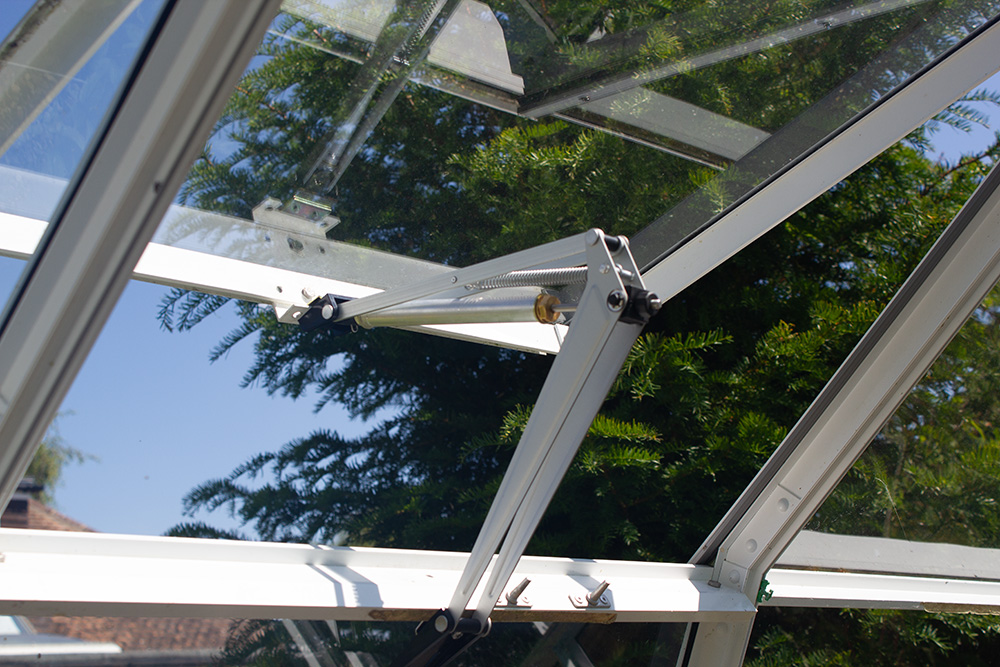At last temperatures have risen and there’s been some sunshine. Keep twining cucumber stems round their supports and cut back the side shoots two leaves beyond the flowers and fruits, as they grow. Increased air movement, keeping the foliage dry, plants well-watered at the base and mulching all combine to reduce chances of powdery mildew as does growing resistant varieties like ‘Carmen’, ‘Passandra’ and ‘Bella’.
Harvest cucumbers when fruits are about 30cm long and continue feeding with high potash tomato fertilizer to encourage further fruiting. Maintain humidity by damping down the floor of the greenhouse and misting cucumbers by hand twice a day with an atomiser to ensure humidity is maintained around the underside of the leaves. This reduces problems with red spider (or two spotted) mite a common problem with both cucumbers and aubergines. You may need to resort to biological controls later in the season.

Keep the greenhouse free of damaged or diseased material to prevent problems from spreading. Remove any dead leaves from plants. Check plants daily for pests and diseases and treat them immediately before populations establish, particularly glasshouse red spider mite and whitefly. Use environmentally friendly controls.
Feed and water plants regularly with tepid water, particularly those in containers so they do not dry out. You can tell if your containerised plants need watering by sticking your finger into the surface of the compost; if your finger is clean when you pull it out then the plant needs watering. It is also beneficial to learn how to judge this by the weight of the pot with wet and dry compost. When watering, give plants a thorough soak and allow the compost to drain; a light sprinkle simply encourages roots to the surface where they are more susceptible to drought.
Feed citrus with specialist food and keep the compost moist with tepid rain water. Mist around citrus plants early in the morning to avoid scorching.
Pollinate female indoor melon flowers, (females have a small swelling behind each flower; male flowers do not) then pinch out the stem at the first leaf beyond the flower. Pinch out the growing point of outdoor melons twice, at four-week intervals to encourage branching. Water regularly using tepid water, keep the soil moist but not waterlogged; avoid wetting the leaves which encourages fungus. If you are growing them over the ground, rather than supported by netting, raise the fruit on tiles or pieces of wood so the fruit does not rot. Feed these and other fruiting crops with high potash tomato fertiliser.
Harvest crops regularly so the unripe fruit continues to mature.
Stop cordon tomatoes by removing the main shoot just above a leaf above the fourth truss of developing fruit, if you have not already done so.
Continue to remove side shoots from tomatoes, tap the open flowers to encourage pollination at mid-day when the pollen is dry and tie the stems to canes or supporting string as they grow. Keep the compost moist as erratic watering causes splitting and ‘blossom end rot’. On hot days you may need to do this twice a day – even more often if you are growing in pots and growing bags.
Ventilate the greenhouse on hot days, before temperatures rise.
Happy gardening! Matt










